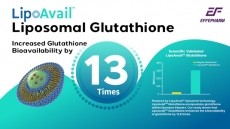New eye health gummy hits market to combat blue light

Once just considered a Baby Boomer category that focused on preventing further eye deterioration has now become a Millennial issue. The Eye Health Ingredients Market size is slated to surpass $290 million by 2024, according to a research report by Global Market Insights.
Taking a look at screen time
According to a BusinessFibre.co.uk, “Americans spend an average of 6.31 hours time per day accessing the internet on any device.”
In the US, the average amount of time spent daily using the mobile internet is 2 hours 24 minutes, and people spend 4 hours 7 minutes daily on the internet using a laptop, desktop or tablet.
This puts the US in 12th place among countries with the highest amount of computer screen time.
While not the worst offender, Americans aren’t exactly setting a good example for younger generations.
Teens in the US average over seven hours of screen time a day—and that doesn't include screen time for school and homework, according to a report by nonprofit Common Sense Media.
To help maintain eye health, the eyes need nutrients to help filter the blue light emitted by many digital devices. Life Extension developed Gummy Science Digital Eye Support, a new, science-based supplement that aims to provide those nutrients.
"Since we're not going to drastically reduce the time spent on our phones or computers, supplementing with nutrients that can filter the light is essential to maintain healthy vision," said Dr. Michael Smith, Life Extension's director of education.
Macular carotenoids may protect eyes against blue light damage
Gummy Science Digital Eye Support contain a patented marigold extract that improved glare and photostress response scores in several clinical studies. Dr. Smith said the gummies deliver the macular carotenoids lutein, zeaxanthin and meso-zeaxanthin. These nutrients help revitalize the density of the macular pigment—material in the retina that protects the delicate photoreceptors at the back of the eye by filtering out blue light. Lutein and zeaxanthin also support visual health and acuity by protecting delicate eye tissues from oxidative stress.
Dr. Smith told NutraIngredients-USA, “78% of the US population receives a harmful amount of blue light everyday that reaches the sensitive photoreceptors." This directly decreases what is called the Macular Pigment Ocular Density or MPOD. This is the amount of pigmented compounds, like lutein and zeaxanthin, that cover and protect the photoreceptors.
These pigmented compounds, called macular carotenoids, are found naturally in the eyes, and several studies have noted that a depletion of them is linked to visual impairments.
“The gummies contain all three macular carotenoids (lutein and meso-zeaxanthin/zeaxanthin) at the same 5:1 ratio as found in the diet to optimally support eye health. This ratio allows for the optimal filtering of blue light across several wavelengths.”
Dr. Smith said that a perfect score of 1 on the MPOD (a test that measures the density) means that the amount of blue light reaching the photoreceptor is only 3%. However, the average American has an MPOD score of 0.3, which correlates to a blue light penetration of 35%.
“This is a lot of blue light reaching the photoreceptors and is causing significant damage.”
Pill fatigue makes gummies more appealing
“More and more, supplement users are looking for alternative formats – and gummies are the favorite for most users. The driver behind the desire for gummies (and other formats) is “pill fatigue.” Taking more and more pills is becoming a burden, and people are looking for ways to minimize pill intake,” Dr. Smith told NutraIngredients-USA.
Science that is easy on the eyes
For the past several years, OmniActive has invested in research on its Lutemax 2020, the active ingredient in Gummy Science Digital Eye Support.
Researchers previously studied the cellular mechanisms or the physical mechanisms that are correlated with performance in mice. They examined cells in the eye and how they’re performing, and they found that, "for animals exposed to blue light, if they’re not protected, there’s a decrease in the performance of those cells. That damage is correlated to vision loss.”
It builds on a previous human study OmniActive supported, which only looked at the role MPOD’s place on short-term blue light exposure. “What we established here is that blue light over a certain period of time will damage the cells responsible for vision if left unprotected,” he added.
Dr. Smith told NutraIngredients-USA that moving forward, they plan to focus on educating the public on the dangers of blue light and the importance of replenishing the MPOD with lutein, zeaxanthin, and meso-zeaxanthin.
The “20-20-20” rule
To prevent eye strain, the American Optometric Association suggests taking a 20-second break every 20 minutes to look at something 20 feet in the distance.
















